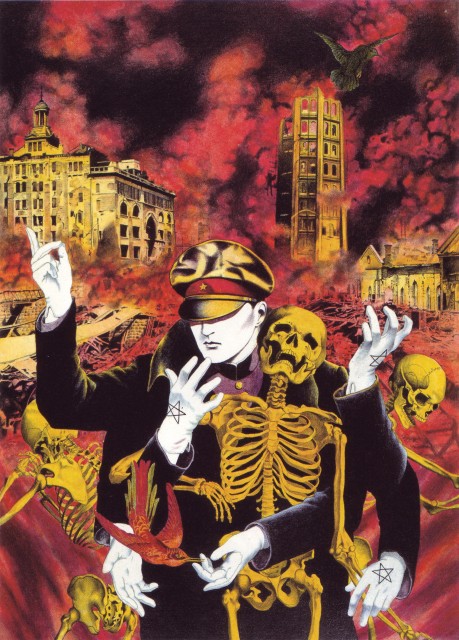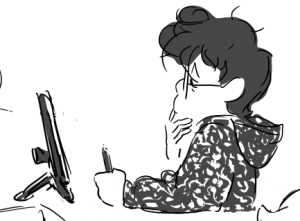Right now I am working on re-shaping my final project and possibly taking a new approach that takes a more curatorial/archival approach to the preservation of fan publications related to events and conventions.
But for my first attempt I tried writing about more contemporary issues along with dwelling on the morality of DH, but grew frustrated with trying to figure out a direction for the paper to go in. When I showed what I had written to a friend, they said that it felt like two different papers, so that’s how I’m presenting what I’ve done so far to you. I might re-work these segments to be part of the final paper, but I’m still mulling that over. For now though, here’s part one.
Convergence Culture by Henry Jenkins, is a book released in 2006, and it feels very present while also being part of a major pre-Twitter era of social interaction through the lens of communication technology. It covers the convergence of old media, new technology, and social media at its infancy. It was written at a curious point just before the explosion of Twitter, which has gone from that thing old people hated because it limited how many characters are used in a sentence, to a lifesaving tool, PR machine, and government communication tool all in one. It opens with our intrepid author recounting his experience trying to find a mobile phone that was purely a phone. The iPhone would not make its debut until a year after the publication of this book. “[I] wasn’t interested in something that could show me movie previews, would have customizable ring tones, or would allow me to read novels.” He goes on to explain that such Spartan phones have only recently vanished from the marketplace due to lack of demand. During my Thanksgiving break from classes I had a chance to meet up with some old high school friends. One of them is currently an accountant and making a decent living, but rather than using a contemporary smartphone, he uses an old style flip phone, which some of my friends refer to as a “burger-phone.”
“The only people that use burger phones [by choice] are drug dealers, crooked cops, or cheating on their wives!” my other friends chided. This could be seen as a typical anecdote about Christmas season haves-and-have-nots or being a modern day Luddite. But it also frames a very interesting perspective on giving connectivity a moral stance. True, older flip phones did have internet functionality. You could browse some websites, play some games, check your email, and buy some ringtones (a lucrative market according to Jenkins in 2006), but all in all their connectivity was fairly limited. Meanwhile today’s phones use wireless internet, and have a never ending supply of social media apps, programs that make keeping track of tickets more efficient, electronic wallets, camera and more. If the only people that want to be off the grid are crooks or the unfaithful, than that means connectivity, and therefore owning a smart phone to foster that connectivity, is a virtue.
Since I had gotten a Jesuit education at Fordham University for my undergrad study, I took a small shred of pride in the fact that the father (in more ways than one) of Digital Humanities was Roberto Busa. Though I do not recall many memories of Fordham being particularly technologically advanced while I was there. In fact the internet speed was rather dreadful. But on a recent excursion to my alma mater for a reunion I saw that one of the old dorm buildings had now been converted into a sort of stock exchange and commerce information center. Pristine glass walls (perfect for showing off what’s within) surrounded a room filled with row after row of computers running Windows 8 while a large monitor at the head of the room displayed a map of the world along with various charts and infographics and a stock ticker lined the ceiling like stripe of fluorescent icing on a cake. Thinking back to my mandatory class readings on spirituality, I recalled the story of John the Baptist, he who lost his head to Salome, wandering through the wilds and subsisting on honey straight from the hive. Goodness and piety was seen as something removed from society that we must seek out. But since the 17th century the Jesuits have enjoyed a reputation for their predilections towards scientific discoveries and education (along with colonialism, religious persecution, and the usual gamut of Catholic controversies. I wonder if there’s such a thing as “digital colonialism”), that it adds to Father Busa being the first person to try and take St. Thomas Aquinas’ writing and move from the Illuminated Text to the punch card, and ultimately to the ether of ones and zeroes. Meanwhile social media has led to heightened social awareness and even a lifesaving tool while pundits claim it is only a tool of vanity. New data is being discovered from old artifacts, and hobbies have become gateways to political ideologies instead of being monastic and isolated affairs. Many laud computers because they are neutral. Ones and zeroes with no credo or prejudices. But the question I posit is whether or not the Digital Humanities can be considered a virtuous form of study and is there an inherent virtue in connectivity, the internet, and digital convergence?
Jenkins mention, with not un-due skepticism, how in the 90s it was predicted that convergence media and culture from the newly birthed internet would be the greatest sword ever wielded against media conglomerates, and that entertainment would become a cluster of cottage industries. Jenkins skepticism in 2006 was due in part to the dot-com bust that happened only a scant few years ago. I still have my own memories of the pets.com sock puppet being everywhere on TV in the early oughts, and then his fall from grace as he became a symbol for the over-eager dotcoms collapsing in on themselves (and now he’s just an old relic on YouTube). Now in 2014 we can see some of that come to fruition while in some ways the prediction has been subverted. Media conglomerates no longer have the same sway they used to, but it is hardly as if they have none. Now everyone wants to be part of their own cottage industry, particularly on YouTube, myself included.
My first attempt at a project was based on the social media platform tumblr. Like Livejournal before it, tumblr has emerged as the platform of choice for teens and twenty-somethings to espouse their day-to-day woes and tribulations. But added to the mix are throngs of artists, some professional, many not that gravitated towards the platform because of its lax content restrictions, as opposed to DeviantArt. My initial idea was based on the large amount of international users across tumblr. Many of them were artists working in some kind of cottage industry, selling prints, commissions, assorted tchokies with their art on them, or otherwise using tumblr as an extension and media presence for whatever industry they’re already in (journalism, comic books, translations). What I set out to do was to see if there is any kind of correlation between where tumblr users are located and where the people they in turn follow are located. I was hoping to find a great web that bound together finds of niche fandoms with content creators, and see how international borders now meant nothing. That is until I sought some input regarding my idea.
The critiques I received made me remember what a valuable currency information is. In Neal Stephenon’s novel Snow Crash (a sort of tongue-in-cheek counterpoint to William Gibson’s grim-n-gritty Neuromancer) the character YT is a fifteen year old courier that also makes her living as an information broker, collecting valuable data on just about anything she can get her hands on to sell to interested parties. The information I was seeking would indeed be an interesting way to connect the lines of fandom that have been used as a web to bring fans together for decades, but now such data would be considered a form of invasion of privacy or just another boon for advertisers.



